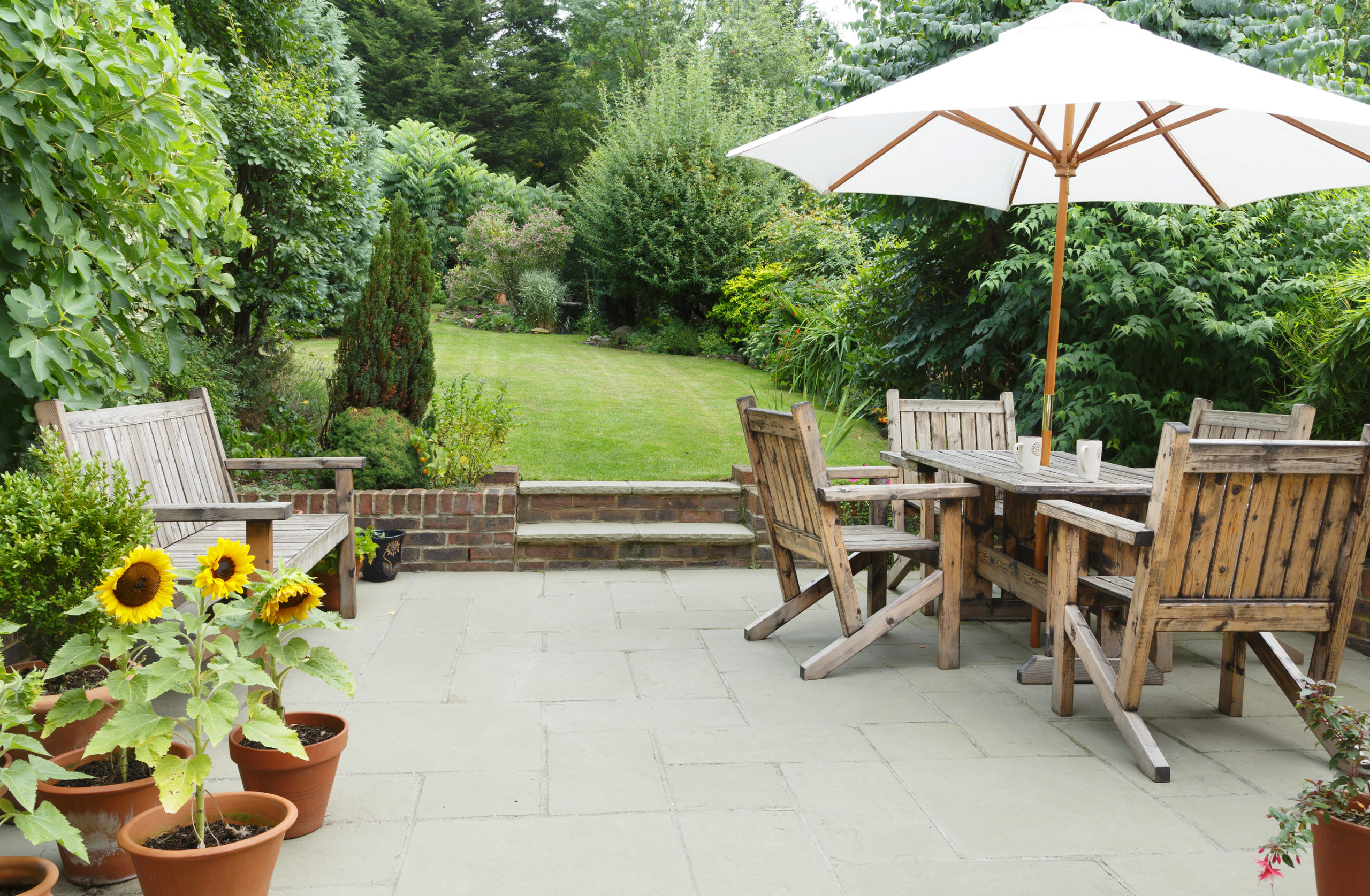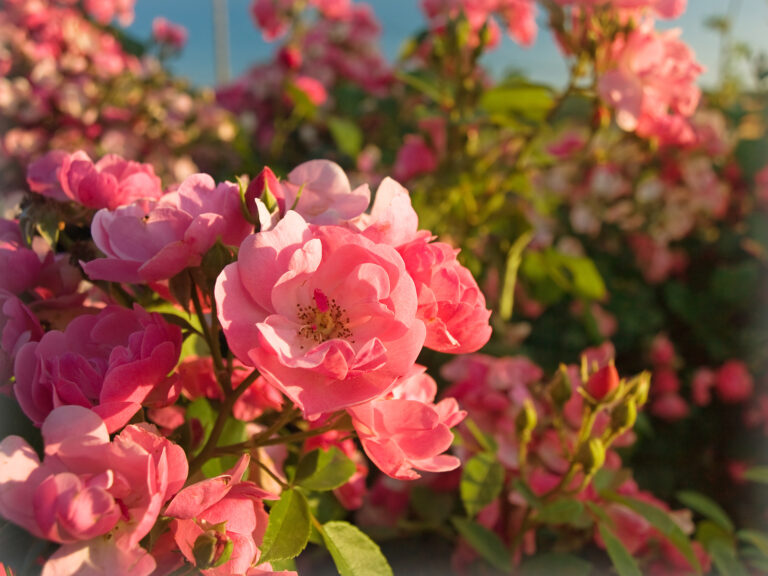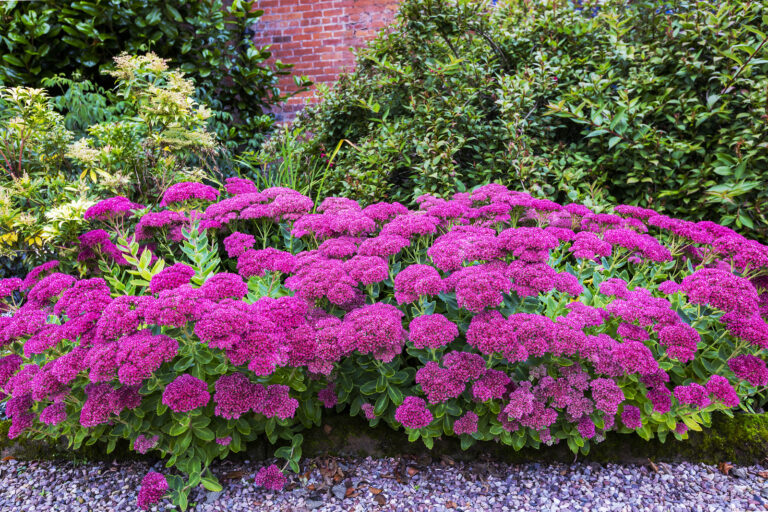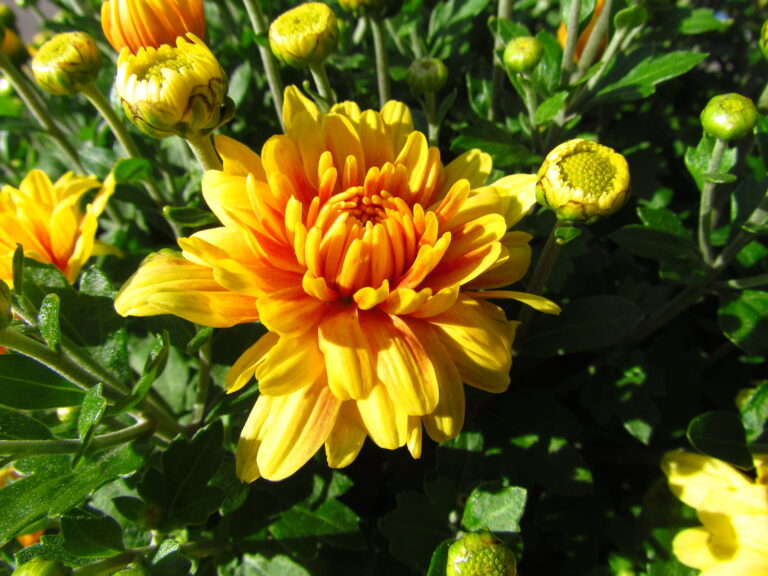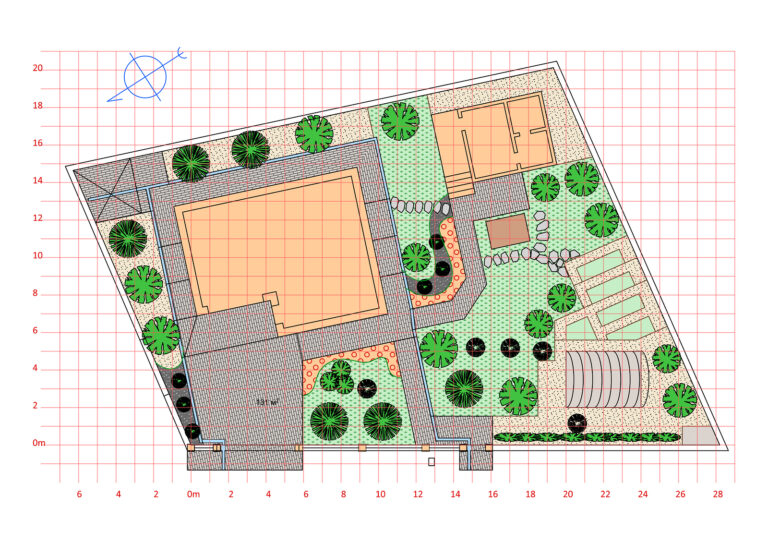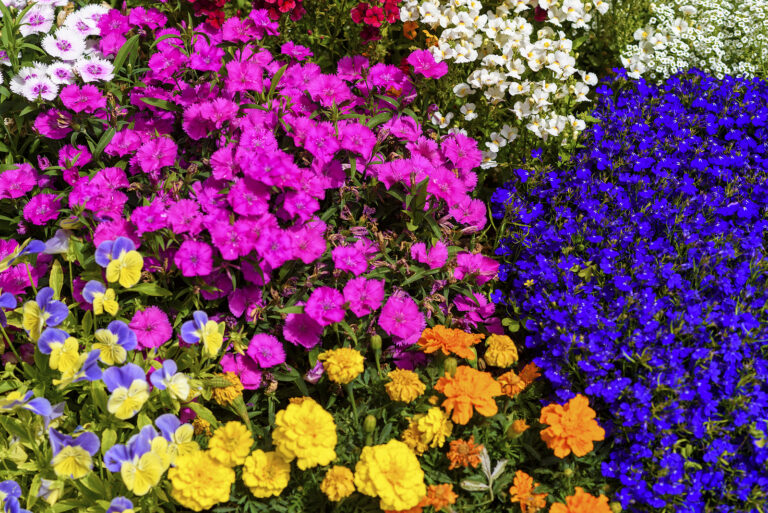Garden Structures
Garden structure includes fixed items in the garden.
Garden structure includes hardscape—fixed decks, patios, porches, walkways and path, fences and walls, retaining walls, and edging. Garden structure also includes fixed plantings such as trees and hedges.
More broadly garden structure includes the property lines and the house and other structures that sit in the landscape.
Garden structures help define the garden and its style. Garden designers commonly refer to fixed structures and elements in a garden as the “bones” of the garden. These fixed elements are the bones or framework on which soft scape is set.
Softscape in a garden are plants that are not so permanent. Annual plants are in the garden for one season; perennials for 3 to 5 years; some shrubs for 5 or so years. Shrubs and trees that are in the garden for the long-haul are part of a garden’s bones—and can be considered structural.
A roundup of garden structures follows.
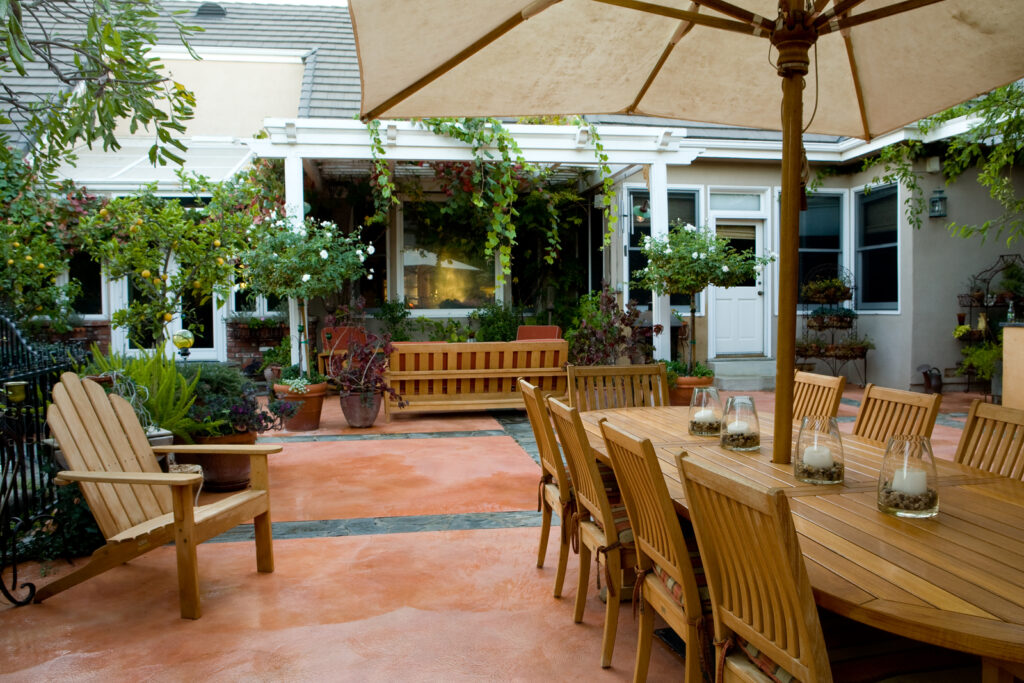
Decks, patios, and porches
- Decks, patios, and porches serve as transitional spaces between the home or building and the garden. They are practical and functional.
- Decks, patios, and porches are outdoor living spaces. They commonly include outdoor furniture, grills, pots and containers, and sometimes a water feature—a fountain or pool.
- Decks, patios, and porches help frame the view of the garden from the home and the view of the home from the garden.
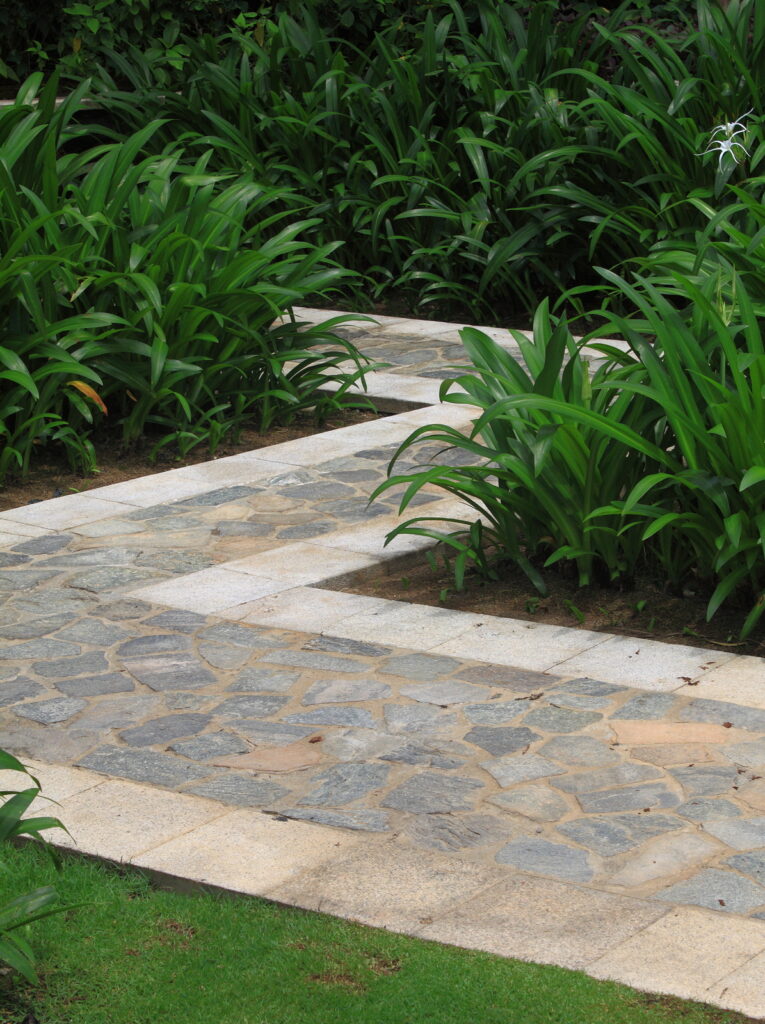
Paths and walkways
- Paths and walkways are functional but also contribute to the bones of the garden and the garden design and style.
- Large paths and walks direct traffic; they help people know where to go in the garden. Paths often lead to the house or garage, but they can also simply be for strolling.
- Paths in a stroll garden are usually wandering and informal. A directional path—one to the house or driveway should be wide enough for two people to walk side by side, 4 feet or wider. A comfortable path for strolling should be about 3 feet wide.
- A maintenance path between planting beds can be narrower.
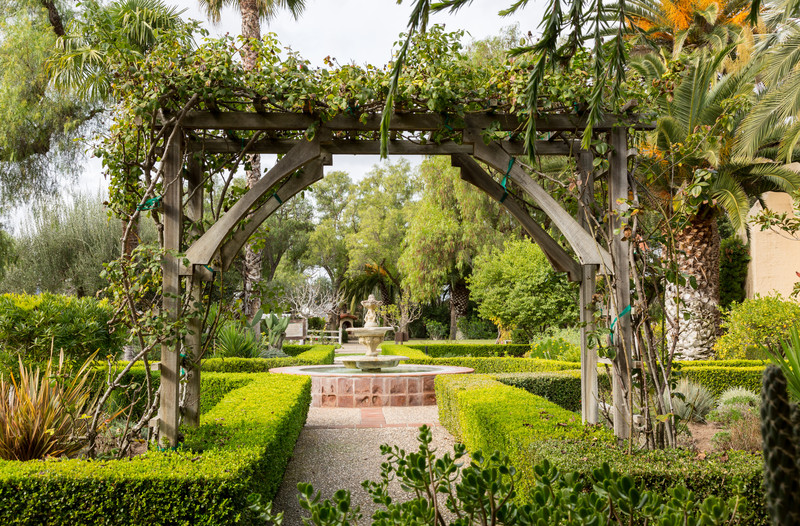
Arbors, trellises, and pergolas
- Arbors, trellises, and pergolas had height, structural flare, and interest to a garden.
- Arbors are commonly used to mark walkway entries or entries to informal garden paths or lawns. Arbors are commonly made of wood or metal.
- Trellises are used to support vines, often to bring color to a building wall. They can also be used as dividers and screens. Vines for arbors are often evergreen and flowering but not always.
- Pergolas can be placed to provide shade over walkways or to create an informal seating or dining area. Vines commonly climb the corner supports of a pergola and then cover the top leaving the sides of the pergola open to the garden.
- Gazebos are a structural step-up from pergolas. They often have partially enclosed sides and create a more defined garden room.
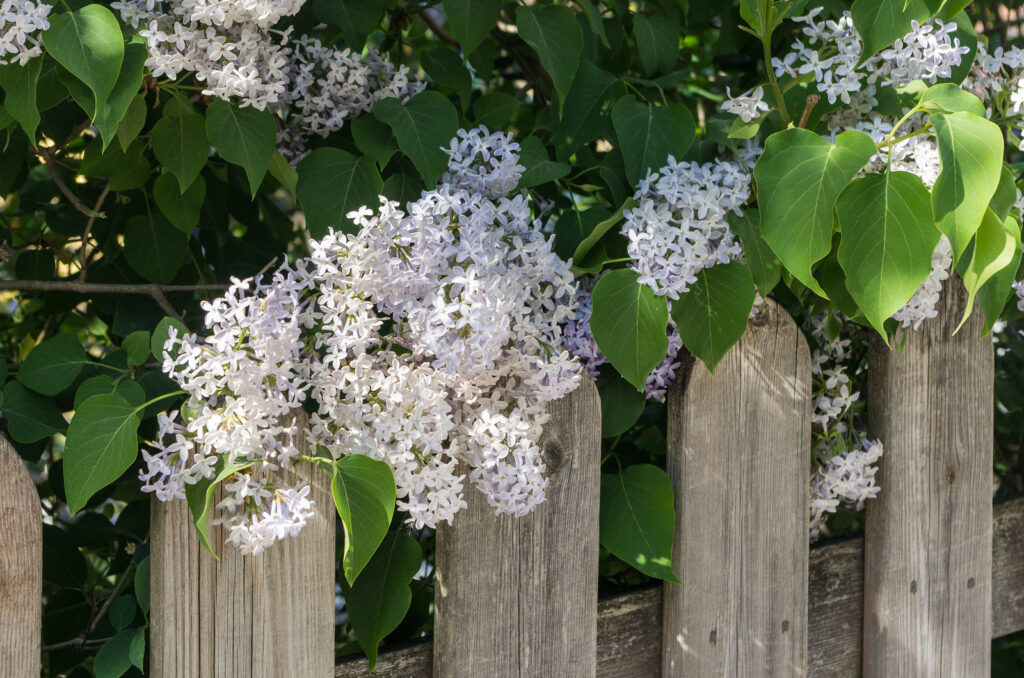
Fences, walls, and hedges
- Fences, walls, and hedges are commonly used to mark boundaries—a property line or to define “rooms” or sections of a large garden.
- Fences and walls can be of varying heights and materials. Check local ordinances for height, density, and material restrictions. Fences taller than 4 or 5 feet can be topped with a lattice; this will lighten up the design.
- Walls of brick or stone are often used to enclose and shelter gardens that might otherwise be exposed to wind.
- Hedges are often used to mark property lines or garden boundaries. They are often a living green wall with more color and textural interest than as a fence or wall, especially if flowering plants are used.
- Hedges can be small and narrow—like some boxwood hedges, or large and imposing like hedges of yew, thuja, English laurel, Ligustrum, or photinia.
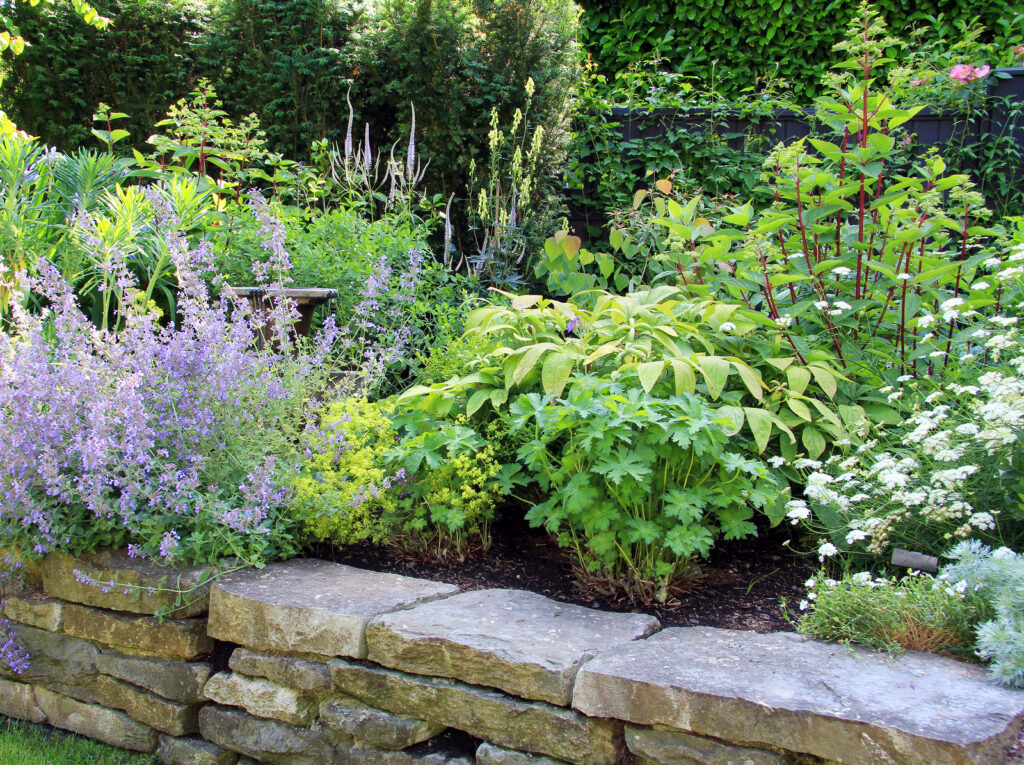
Retaining walls
- Retaining walls are used to hold soil in place—to terrace a hillside creating additional planting space in a garden or to raise up a planting bed in an otherwise flat garden. A retaining wall for a raised bed can include seating around the edge.
- The height of retaining walls on slopes must meet local ordinance height restrictions. A series of stepped small retaining walls that do not require permitting is one way to tame a troublesome slope or hillside.
- Where there is significant soil behind a retaining wall it is best to hire a licensed contractor or civil engineer. For small retaining walls, less than three feet tall, interlocking blocks are one way to do-it-yourself.
- Retaining wall materials should always reflect the style of the garden.

Edging
- Edging gives planting beds and walkways definition. Select an edging that goes with the other materials in the garden. Use brick for edging in walkways are brick.
- Use natural wood or timbers in an informal garden.
- Use thin redwood or plastic “bender board” to delineate beds where you plant to used string trimmers or lawnmowers.

